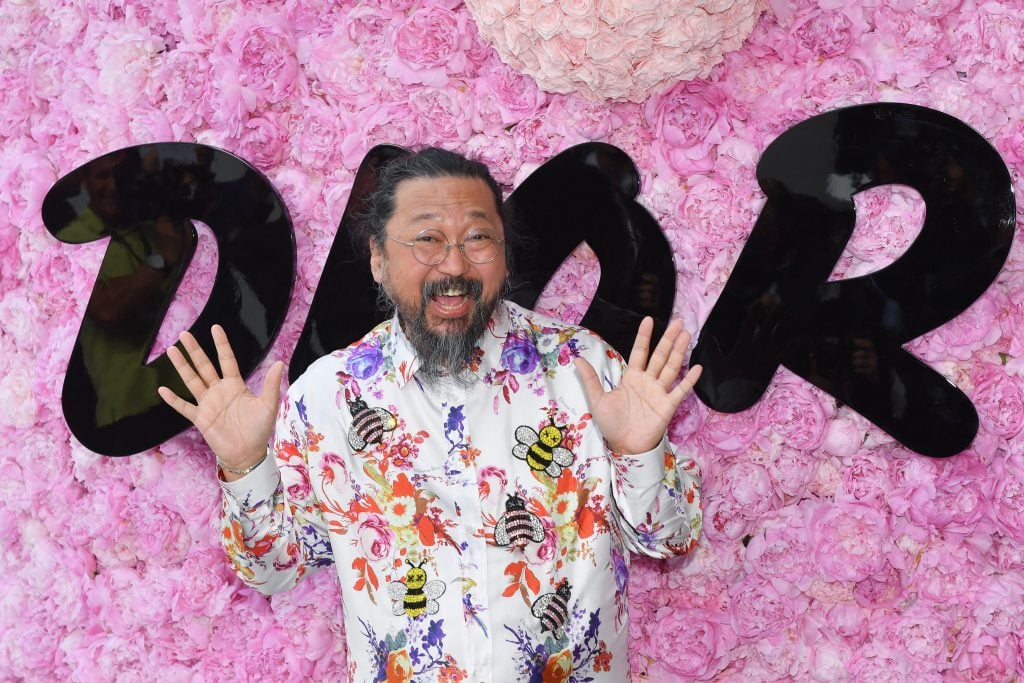People
Takashi Murakami Announces That His Business Is on the Brink of Bankruptcy in an Emotional New Video Posted to Instagram
The artist's lavish spending and big-budget sci-fi film could be the cause of his financial woes.

The artist's lavish spending and big-budget sci-fi film could be the cause of his financial woes.

Caroline Goldstein

One of the best-selling artists alive, Takashi Murakami, revealed today that he is on the brink of bankruptcy.
In a video posted to his Instagram, Murakami details the “heartbreaking story” to his two million-plus fans directly from inside his studio, where it appears assistants are at work behind him. A label identifies the filming date as more than a month ago, May 23, and subtitles accompany the 15-minute video, which was first reported by Hypebeast.
Murakami explains that his gallery and arts company Kaikai Kiki is facing bankruptcy, and that he was forced to abruptly end production on many of his current ventures, including his pet project, a sci-fi feature-length film titled Jellyfish Eyes Part 2: Mahashankh. The film was a labor of love for the artist, who had been working on it for the past nine years. Part 1 was released in Japan and the United States in 2013. Though the artist says it was “not a good success, business-wise,” he kept pouring money into filming and production in an attempt to “realize my childish dreams!”
In the end, it may have cost him his business.
Murakami’s signature Superflat style, featuring maniacally smiling flowers and colorful winking eyes, earned him not just global art-world recognition, but a kingly status in streetwear and fashion circles. A slew of successful collaborations with A-list designers including Louis Vuitton, Virgil Abloh, Comme des Garçons, and Supreme, plus projects with Billie Eilish, Kanye West, and Pharrell Williams have made him one of the most recognizable faces in contemporary art.
But despite these business boons, the artist has a reputation for lavish spending that may have led to his abrupt departure from Blum & Poe gallery in 2019, which had represented him since the beginning of his career in the 1990s. When the relationship’s demise was made public, a number of collectors and industry insiders familiar with Murakami’s market told Artnet News that a glut of work on the market had possibly diluted interest, leading to poor sales. Some speculated that the reason for Murakami’s many fashion-related projects was due to the lackluster market for his fine art.
While Murakami said that he would be shifting the format of Jellyfish Eyes Part 2 from a feature film to small video clips, he did not elaborate on what the future of Kaikai Kiki Gallery holds. The Tokyo-based project space moved its headquarters to an urban office in 2006 and, two years later, transformed its private viewing room into a public gallery, where it shows work by regional artists like Mr., James Jean, and Yuji Ueda. It has also exhibited international names like Mark Grotjahn and Friedrich Kunath. The most recent show featured artist ob, who the gallery says “is one of the most important artists who emerged as part of Japan’s SNS generation in 2010.” The exhibition, “Spiral and Spring,” ended on March 24, and no future exhibitions are listed.
Kaikai Kiki did not immediately respond to a request for comment.